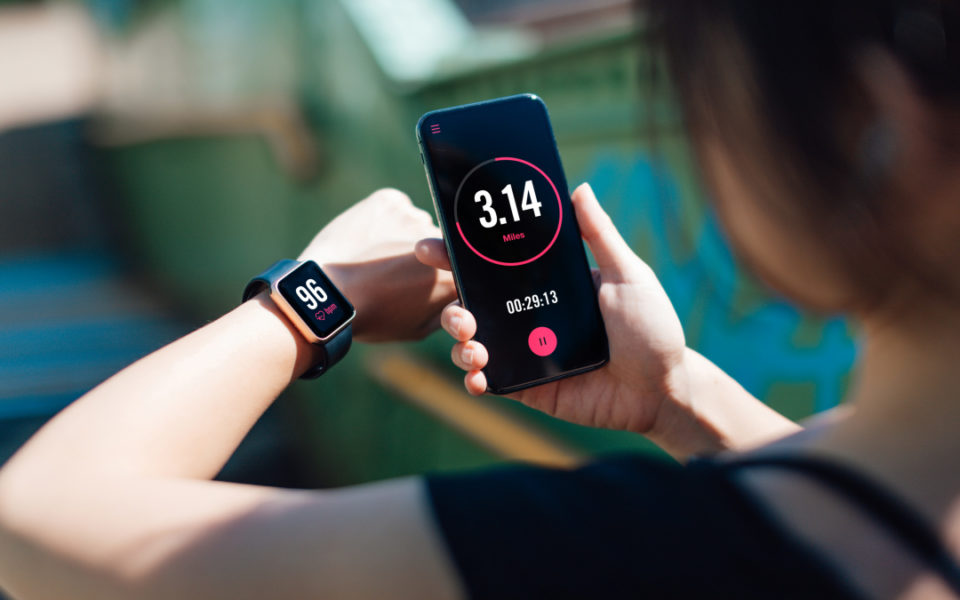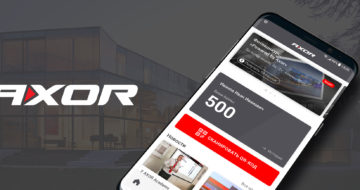The fitness industry is growing at a fast pace thanks to smartphones, so more and more people are thinking about shifting to a healthier lifestyle. If you work in this niche but still don’t understand how to develop a fitness app that would engage your target audience, our quick guide will help you learn the basics of the process.
What are fitness apps?
Fitness apps are mobile services that help people to follow their training programs and track their athletic performance. They take on the role of interactive personal trainers and can motivate sports enthusiasts by providing them with detailed training information in a gamified format.
To develop a fitness app that engages people as effectively as possible, there are many factors to consider. These include the preferred mobile platform, the target audience specifics, the type of service required, the number of functions, etc.
Fitness app development stages:
- Market analysis and competitive apps. At this stage, our team evaluates the state of the target market and examines competing services with a set of functions that you would like to implement in your app, taking into account the available budget.
- Defining goals. At this stage, our specialists will agree with you all the needs and wishes for development in order to determine the desired type of mobile app.
- Determination of the priority platform. In this step, we need to understand which mobile platforms – iOS or Android – you want to cover with your future service. Native development for one platform will cost you less, and cross-platform development will take more time but will engage more users.
- Creation of a prototype of a future product. Once all the initial points are agreed upon, our staff will create a prototype of the app so that you get an idea of its visual style and functional features.
- Writing code and running the app in test mode. Having approved the technical aspects of the upcoming development, we will transfer the project to our programmers, who will implement all the coding. And after, our QA specialists thoroughly test the app before launching it.
- Publishing to the App Store or Play Store. When the team has successfully pre-validated the service, we will upload it to the iOS and/or Android app stores. After that, the specialists will take care of post-release support for the app, which includes tracking and fixing errors, as well as optimizing the user experience based on the customers’ behavioral patterns.

Types of fitness apps:
- Training and exercise. The essence of such a service is to demonstrate the correct technique for performing the selected exercises to people and allow them to track the results of their workouts in an understandable format.
- Proper nutrition and dieting. These apps are designed for people who want to lose weight, increase muscle mass, or improve their lifestyle by redesigning their eating habits. These services should count calories consumed, offer people proven recipes, allow them to share their results on social media platforms, and more.
- Personal trainer. This mobile fitness app can enhance the customer experience with gyms or fitness centers. You could advertise new training programs, the services of your specialists, and also charge customers for visiting your establishment with it.
- Multifunctional apps. Of course, such an app is a universal fitness solution that can combine exercise guides, detailed training statistics, nutritional recommendations, etc. The downside is that combining more functions in one service increases development costs.
- Tracking. The main task of these services is to track specific parameters. They count the number of calories consumed, distance traveled over a certain period, running speed, and much more. Most often, tracking apps rely on the accelerometer of the smartphone or additional devices like fitness bracelets in this regard.
- Wellness. These apps allow people to try out experimental fitness practices, be it yoga, meditation, or other healthy lifestyle technics. Video demos, audio guides, motivational messages, and time tracking functions play an important role in these services.

Conclusion
The fitness app market has expanded significantly in recent years, but this does not mean that there are no promising niches left for the growth of your business. By understanding the main development stages of such services and their main varieties, it will be much easier for you to explain to our team what functional features you would like to see in your app.
By the way with all the mobile apps advantages for business you can read our updated article!




